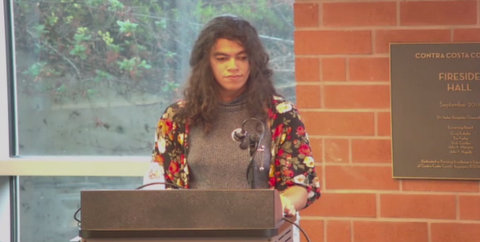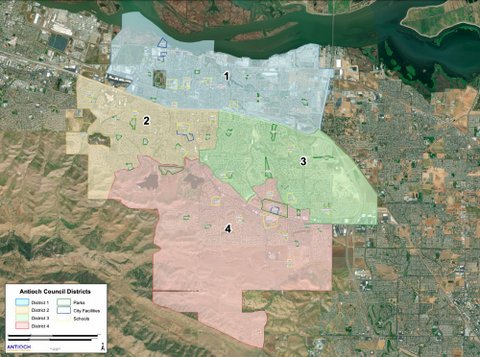
25 Nov ‘We’re Building a Voice’: Youth Affected by Homelessness Want to Be Part of Conversation to Solve ‘Crisis’

“The services are out there,” said Renee Juno Hedrick, vice chair of Contra Costa’s Council on Homelessness, moderating a Nov. 14 youth homelessness panel. (Screenshot captured by Samantha Kennedy / The CC Pulse)
By Samantha Kennedy
Contra Costa County youth with lived experiences of homelessness are asking for a seat at the table to decide how homelessness should be tackled after saying they’ve felt left out of decision-making.
Youth leaders convened a panel, co-hosted by Contra Costa College and Contra Costa County’s Youth Action Board, on Nov. 14 that came during National Homeless Awareness Month and looked to highlight the needs of youth experiencing homelessness.
A 2024 Community Needs Assessment specific to youth needs and commissioned by Contra Costa Health’s Health, Housing and Homeless Services says that youth and young adult homelessness “is a crisis” in the county in part due to the lack of resources and not being included in decisions.
Nearly 2,900 Contra Costa students were experiencing homelessness during the 2022-23 school year, according to the report, and estimates that up to 13,500 youth and young adults experience homelessness per year.
“The more we all come together, the more people, we’re not just building a person, an empire,” said panelist Anna P. “We’re building a voice.”
Panelists offered various suggestions to support homeless youth, including prevention, such as identifying at-risk youth, increasing accessible resources, rapid rehousing and youth advocacy.
The goal of something like rapid rehousing is “to reduce the length of homelessness and prevent it from becoming chronic,” said Anastasia, another panelist. Rapid rehousing, she said, allowed her to receive services that led to her finding permanent housing.
The report also found that the county “is full of amazing individuals working to end homelessness” but those partnerships were not enough to adequately respond to the crisis homeless youth are facing.
Building partnerships “is entirely based on communication and advertisement of services,” said Teddy, another panelist.
Adults experiencing homelessness, according to the report, also report difficulty accessing supportive services, especially if they were not already connected to county services, and confusion about which programs they may be eligible for.
“The services are out there,” said Renee Juno Hedrick, moderator and vice chair of Contra Costa’s Council on Homelessness. “And part of it is navigating through them.”
That includes navigating challenges with age or financial literacy, such as lacking information around or not having a credit score, which several panelists said was one of the biggest challenges they had to overcome when homeless.
Lack of empathy and stigma around homelessness are other barriers to addressing the challenges homeless youth face, according to the report.
Underserved youth communities who are experiencing homelessness are, like their adult counterparts, overrepresented. About 50% of identified homeless youth also had a disability, according to the Contra Costa Homeless Management Information System, or HMIS, and almost 50% identified as Black.
The report suggests that improving data collection could help better identify the needs of underserved communities that are overrepresented in homeless populations.
Panelists stressed the importance of acts of kindness and empathy in helping to reduce the stigma around those who are experiencing homelessness.
“It’s important to make sure that there are safe, non-judgemental spaces where (youth) can access certain services without feeling ashamed or like they’re being penalized,” said Anastasia. “It should be about giving youth the tools to build the stability that respects their autonomy and dignity.”
Contra Costa residents experiencing homelessness can find services available to them here or through the 211 Contra Costa online database here.






No Comments